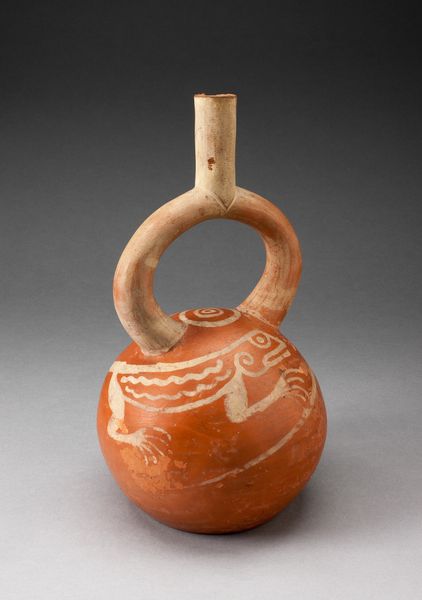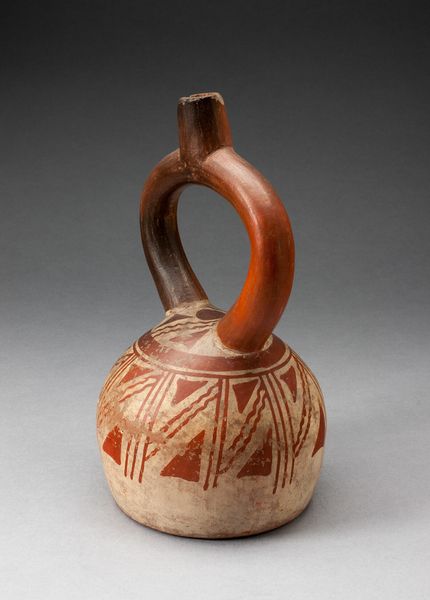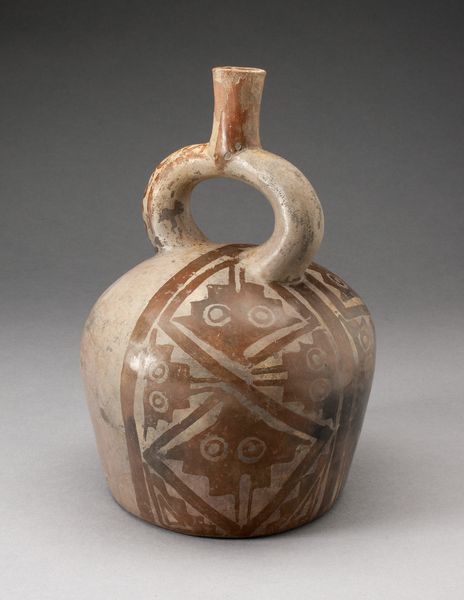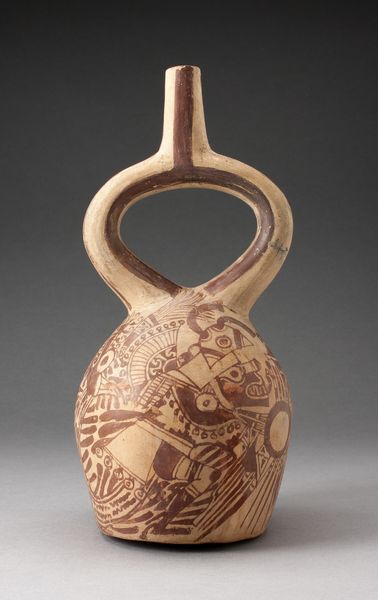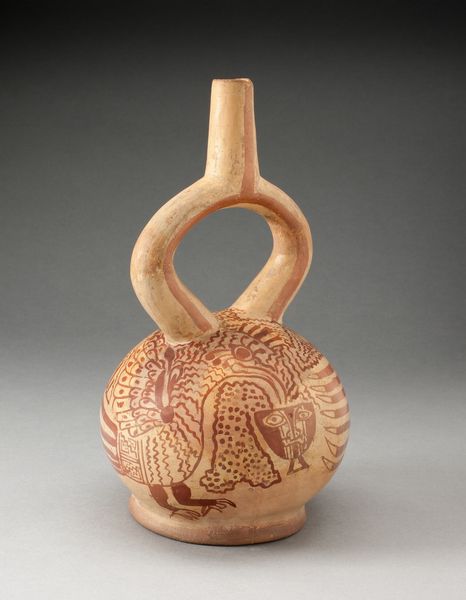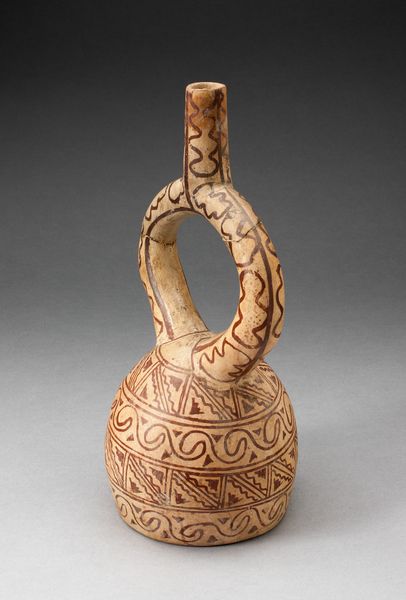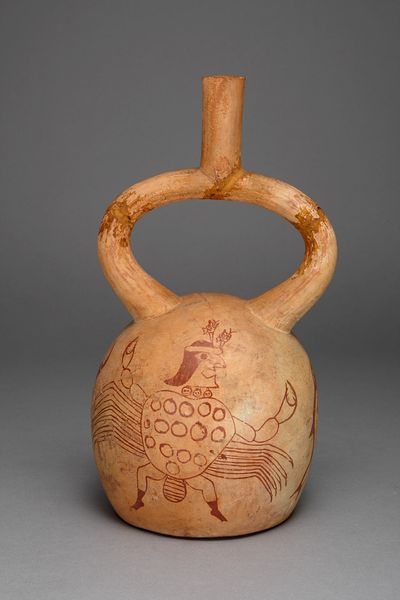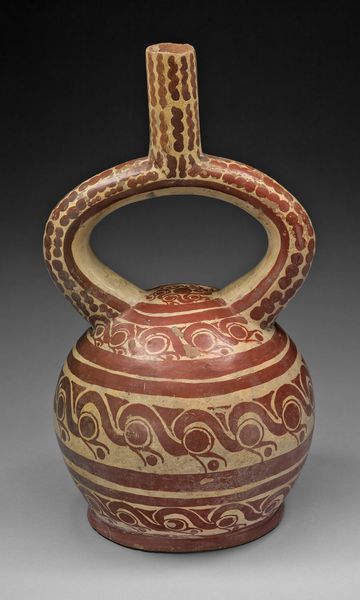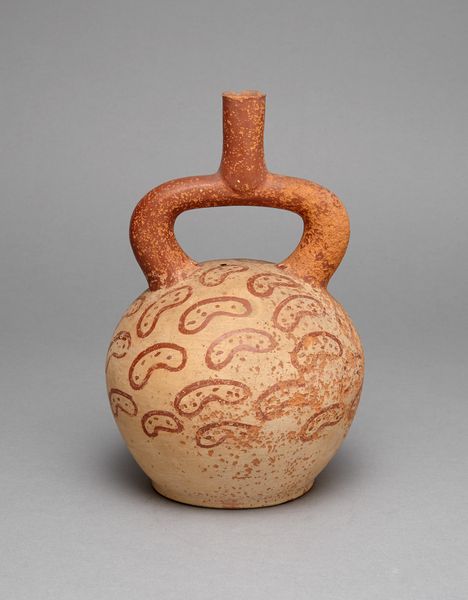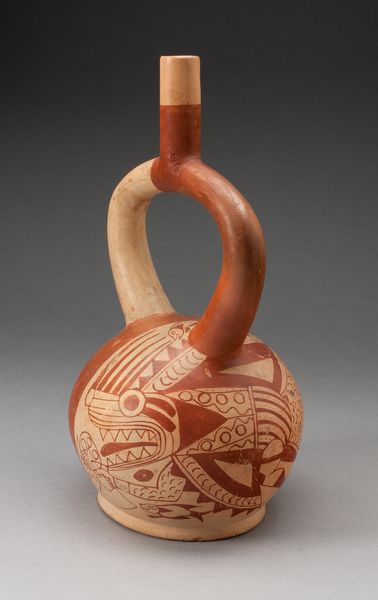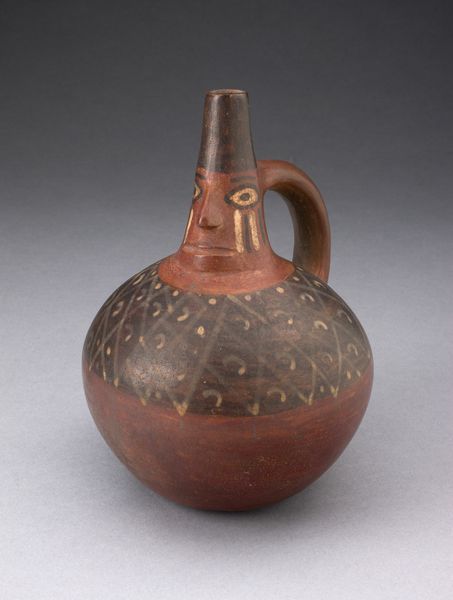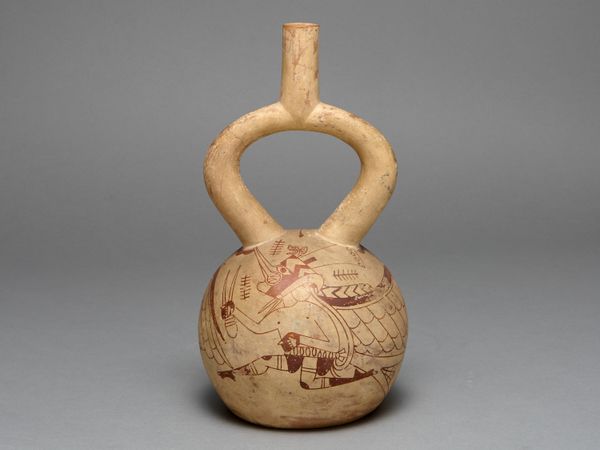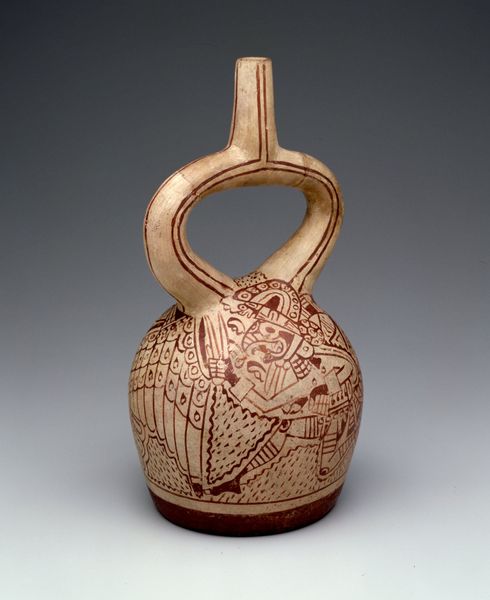
ceramic, terracotta
#
ceramic
#
figuration
#
line
#
terracotta
#
indigenous-americas
Dimensions: 29.2 × 15.6 cm (11 1/2 × 6 1/8 in.)
Copyright: Public Domain
Editor: We're looking at a Moche ceramic vessel, circa 100 to 500, adorned with feline figures. It has a looped handle connecting the spout to the spherical body. The material, the ceramic itself, gives it this earthy tone. I'm curious, with your expertise, what catches your eye in terms of its socio-historical implications? Curator: The Moche people’s capacity to form this ceramic piece with its loop and spout handle and painted figures indicates craft specialization. Considering this was 100 to 500 AD, it really provokes me to ask what were the means of acquiring the clay, the division of labor in creating such form, the process for mixing the paints, the construction of kilns firing, and trade with different regions and how they influenced style or patterns to emulate! Editor: That’s a fantastic way to approach it. It sounds like you're envisioning the entire production chain! Did the vessel's function influence their creative process? Curator: Precisely. Was this for utilitarian storage of valuable liquids and grains? Or for ritualistic practice during ceremony and worship. Either of these scenarios suggests something. Do we even know if the ceramic artists were men or women, how they received materials and if they controlled any means of the process of the work. These details reveal a more detailed socioeconomic structure. The painted feline figures also speak to belief systems; are they protectors, dieties, or simply decorative? Editor: Right, understanding how it was made is key to understanding its significance. It's almost like the object is frozen material record of a lost time. Curator: Yes! Considering it in terms of a chain of labour invites us to ask deeper questions that a pure focus on aesthetics might obscure. This is especially needed as, in museum culture, art from the Americas is still so heavily othered, considered purely “craft”. Editor: It makes you rethink what you initially consider about the value of the work. I appreciate that! Curator: Indeed. Looking at the material and means of production pulls the focus towards the socio-cultural aspects. We can now delve more deeply into how artistic expression is a cultural practice rather than a simple expression.
Comments
No comments
Be the first to comment and join the conversation on the ultimate creative platform.
